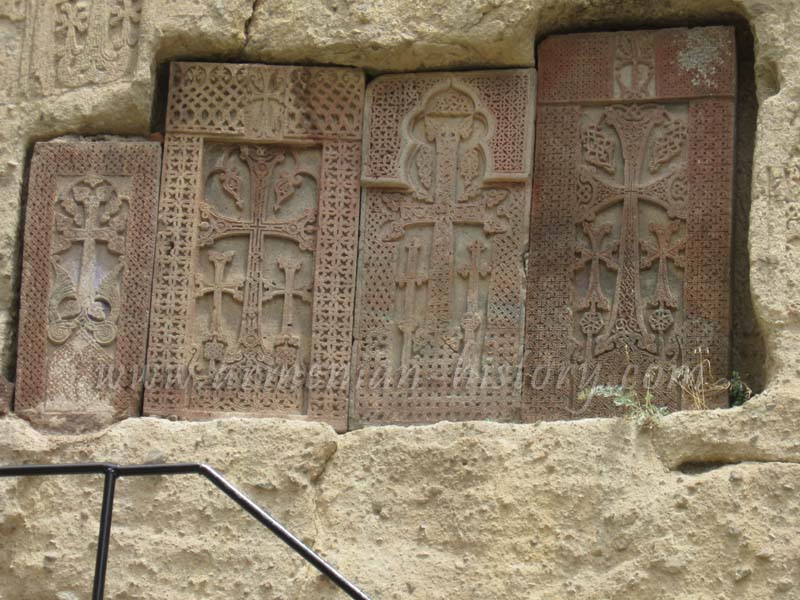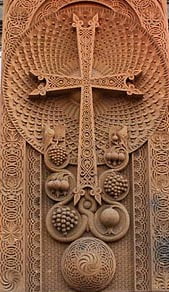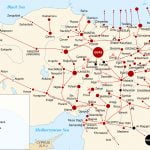Armenian Cross: Discover the Unique Symbol of Faith and Art
The Armenian Cross is a profound symbol that embodies the rich cultural and spiritual heritage of the Armenian people. With its distinctive design, the Armenian Cross has been a significant part of Armenian history for centuries, representing faith, art, and resilience. This page delves into the history, significance, and artistry of the Armenian Cross, highlighting its role in Armenian culture and religion. Additionally, we explore Khachkars, intricately carved stone crosses that are an essential part of Armenian heritage.
The Historical Context of the Armenian Cross
Armenia’s strategic location at the crossroads of Europe and Asia has made it a melting pot of cultures and influences. The Armenian Cross, with its unique design, is deeply rooted in the country’s adoption of Christianity in 301 AD, making Armenia the first nation to embrace Christianity as its state religion. This historic event marked the beginning of a new era, with the Armenian Cross becoming a powerful symbol of the nation’s identity and faith.
The Significance and Symbolism of the Armenian Cross
The Armenian Cross stands as both a religious and cultural symbol, embodying the deep-rooted faith and enduring spirit of the Armenian people. Its distinctive design, with flared arms and intricate carvings, transcends mere decoration, representing profound spiritual meaning. At the heart of its symbolism lies Christ’s sacrifice and resurrection, eternal life, and the unity of the Armenian nation.

Each of the cross’s five key points—the four arms and the central intersection—carry special significance. The intersection, known as “ak” or “source,” represents the meeting point of the four corners of the world, symbolizing life’s center. The upper wing signifies the Kingdom of Heaven, the lower the destruction of Hell, while the right and left wings represent grace and the remission of sins, respectively. Unique to the Armenian Cross, sun motifs replace crescents, emphasizing light and divine energy, with Christ’s risen glory at the center.
The cross also often features the Wheel of Infinity, symbolizing eternal life and the continuous cycle of existence. Its double-tipped arms, creating eight points, reflect the eight Beatitudes and are a signature feature across Armenian churches. Multiples of eight hold great significance in Armenian religious architecture, where churches are constructed with sixteen pillars and topped with octagonal domes, representing the union of heaven and earth.
The Armenian Cross defines space not only as a spiritual symbol but also as a representation of the church itself. Viewed as a three-dimensional structure, it forms the blueprint for Armenian church architecture. Standing beneath the dome, at the heart of the cross, symbolizes the union of the earthly and divine, offering a sacred space for prayer and communion with God.
Artistic Features of the Armenian Cross
The artistry of the Armenian Cross is a reflection of the incredible skill and creativity of Armenian craftsmen. Common elements found in Armenian Crosses include:
- Flared Arms: Representing the rays of the sun and the eternal light of Christ.
- Intricate Patterns: Symbolizing the beauty and complexity of creation.
- Rope and Chain Designs: Denoting eternity and continuity.
- Floral and Geometric Motifs: Highlighting the interconnectedness of life and the universe.
Khachkars: The Stone Crosses of Armenia





Introduction to Khachkars
Khachkars, or stone crosses, are a unique aspect of Armenian heritage. These intricately carved stones have been a significant part of Armenian culture since the 9th century. Khachkars serve various purposes, including as expressions of faith, memorials, and protective symbols. The term “Khachkar” is derived from the Armenian words “khach” (cross) and “kar” (stone), reflecting their primary design and material.
Historical Background of Khachkars
The tradition of carving Khachkars began in medieval Armenia, particularly during the Armenian Renaissance. These stone crosses were erected to commemorate significant religious events, honor the deceased, or seek divine protection. The artistry and symbolism of Khachkars evolved over centuries, with each piece telling a unique story of faith and resilience.

Famous Khachkars and Their Locations
Armenia is home to numerous Khachkars, many of which are located in monasteries, churches, and open fields. Some of the most notable Khachkars and their locations include:
- Noratus Cemetery: Known for having the largest collection of Khachkars, with over 800 intricately carved stones dating from the 9th to the 17th centuries.
- Haghpat Monastery: A UNESCO World Heritage site that houses some of the finest examples of medieval Khachkars.
- Goshavank Monastery: Features 13th-century Khachkars with detailed carvings and inscriptions that showcase the height of Armenian stone craftsmanship.
Armenian Churches: Pillars of Faith and Architecture

Armenian churches are not only places of worship but also remarkable examples of architectural ingenuity and cultural heritage. These churches, often adorned with intricate carvings and unique designs, stand as testaments to the enduring faith and artistic talent of the Armenian people. Iconic structures such as the Etchmiadzin Cathedral, the spiritual center of the Armenian Apostolic Church, and the rock-carved Geghard Monastery showcase the distinctive Armenian architectural style characterized by pointed domes and detailed stonework. These sacred sites have played a crucial role in preserving Armenia’s religious and cultural identity through the centuries. Whether perched on mountainsides or nestled in valleys, Armenian churches continue to inspire awe and reverence, underscoring the profound connection between faith and art in Armenian culture.
Preservation and Cultural Heritage of Khachkars
Khachkars are significant cultural heritage artifacts. Efforts to preserve these stone crosses have been ongoing, especially after many were destroyed or damaged during conflicts and invasions. UNESCO has recognized Khachkars as an intangible cultural heritage, highlighting their importance and the need for preservation. This recognition underscores the global significance of Khachkars and their role in the cultural identity of the Armenian people.
Modern Interpretations and Uses of the Armenian Cross
Armenian Cross Tattoos
Cross tattoos have become a popular way for people to express their heritage and faith. These tattoos often feature the intricate designs of traditional Armenian Crosses and Khachkars, symbolizing strength, protection, and spiritual connection. The rich symbolism and artistic beauty of the Armenian Cross make it a meaningful and visually appealing choice for tattoos.
Armenian Cross Necklaces and Pendants
Jewelry featuring the Cross is cherished for its beauty and symbolic meaning. Armenian Cross necklaces and pendants, often made of gold or silver, are worn as expressions of faith and cultural pride. These pieces can range from simple designs to elaborate reproductions of historic Khachkars, each carrying a unique story and connection to Armenian heritage.

Armenian Cross Drawings and Emojis
Artists and enthusiasts often create drawings of Armenian Crosses, capturing their intricate details and historical significance. In the digital age, Cross emojis have emerged, allowing people to share their cultural symbols in online communication. These modern interpretations help keep the legacy of the Armenian Cross alive and relevant in contemporary culture.
The Meaning Behind the Armenian Cross
The Armenian Cross, with its distinctive flared arms and intricate carvings, holds deep spiritual meaning. It represents Christ’s sacrifice and resurrection, eternal life, and the unity of the Armenian people. Each element of the cross’s design carries symbolic weight, reflecting centuries of theological and artistic development. The Armenian Cross is a powerful symbol of faith, resilience, and cultural identity.
Armenian Crosses and Khachkars are more than just religious symbols; they are profound expressions of the Armenian spirit, artistry, and cultural heritage. They represent the resilience and creativity of the Armenian people and their deep-rooted Christian faith. By exploring these symbols, we gain a deeper appreciation for Armenia’s rich history and artistic legacy. Whether you are a scholar, a tourist, or someone interested in cultural history, the Armenian Crosses and Khachkars offer a fascinating glimpse into the soul of a nation.
These iconic symbols continue to inspire awe and admiration, serving as enduring reminders of Armenia’s spiritual and cultural journey through the ages. The Armenian Cross and Khachkars stand as testaments to the enduring faith, resilience, and artistic brilliance of the Armenian people, ensuring that their rich heritage remains vibrant and alive for generations to come.
Crosses of Other Cultures
Orthodox Cross Necklace
While the Armenian cross is known for its radiant and intricate floral motifs, the Orthodox Cross Necklace — seen in Russian, Greek, and Eastern Christian traditions — carries its own profound symbolism and history.

Celtic Irish Cross Necklace




